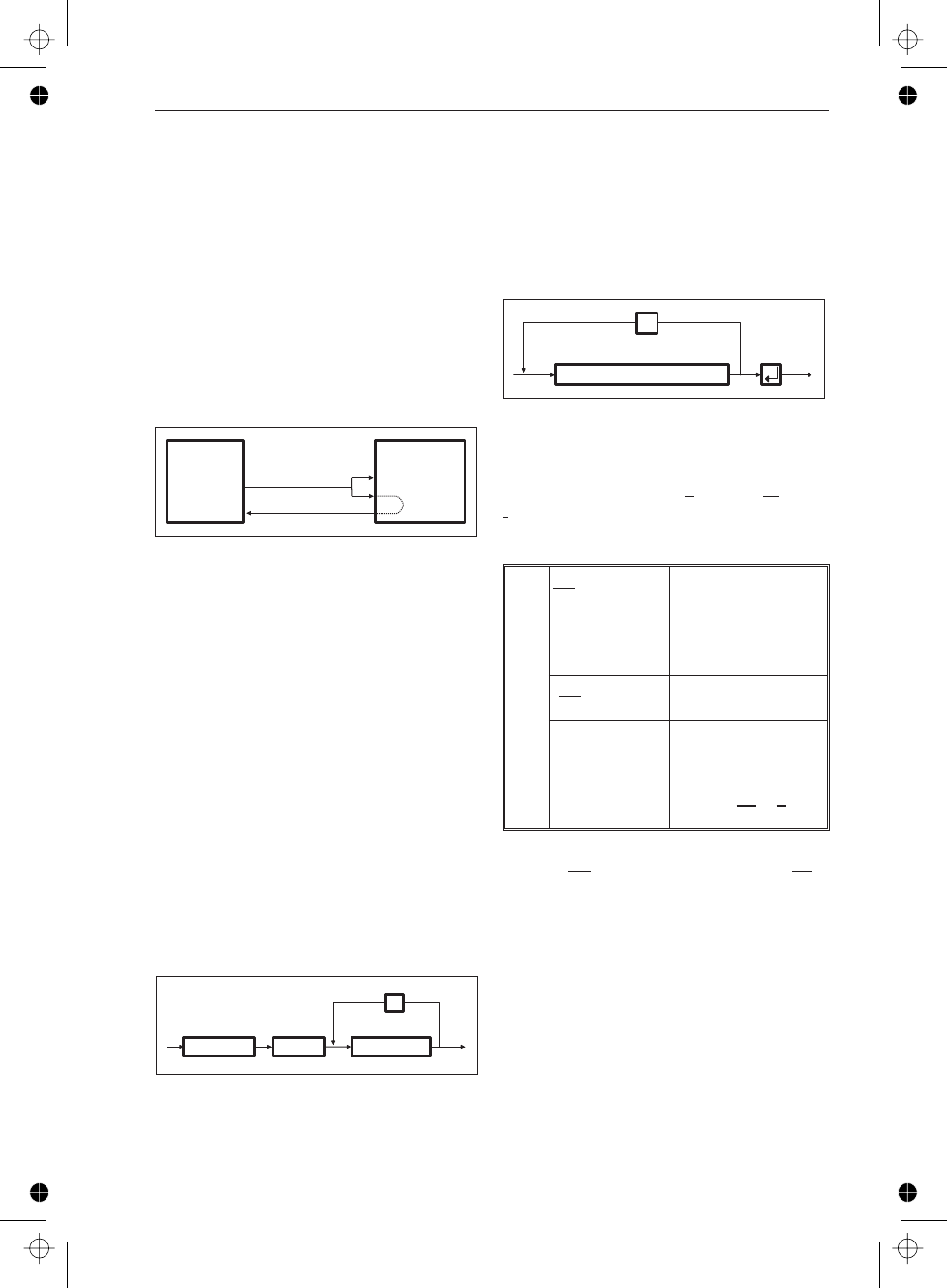
The communication between the system
controller and the SCPI instruments con
-
nected to the GPIB takes place through
Program and Response Messages. A Pro
-
gram Message is a sequence of one or
more commands sent from the controller
to an instrument. Conversely, a Response
Message is the data from the instrument
to the controller.
The GPIB controller instructs the device
through program messages. The device
will only send responses when explicitly
requested to do so; that is, when the con-
troller sends a query. Queries are recog-
nized by the question mark at the end of
the header, for example: *IDN? (requests
the instrument to send identity data).
Syntax and Style
n
Syntax of Program Messages
A command or query is called a program
message unit. A program message unit
consists of a header followed by one or
more parameters, as shown in Figure 3-5 .
One or more program message units
(commands) may be sent within a simple
program message, see Fig. 3-6.
The ¿ is the pmt (p
rogram message
t
erminator) and it must be one of the fol
-
lowing codes:
¿ NL^END This is <new line>
code sent concur-
rently with the
END message on
the GPIB.
NL
This is the <new
line> code.
<dab>^END This is the END
message sent
concurrently with
the last da
ta byte
<dab>.
+
NL is the same as the ASCII LF
(<line feed> = ASCII 10
decimal
).
The END message is sent via the
EOI-line of the GPIB.
The ^ character stands for ‘at the
same time as’.
Introduction to SCPI
Program and Response Messages 3-7
<Header> <Param eter>
,
<Space>
Figure 3-5 Syntax of a Program
Message Unit.
Program and Response Messages
C o n tro lle r D e v ic e
Commands
Queries
Program Messages
Res
p
onse Messa
g
es
Figure 3-4 Program and response
messages.
;
<Program M essage Unit>
Fig 3-6 Syntax of a terminated
Program Message.


















